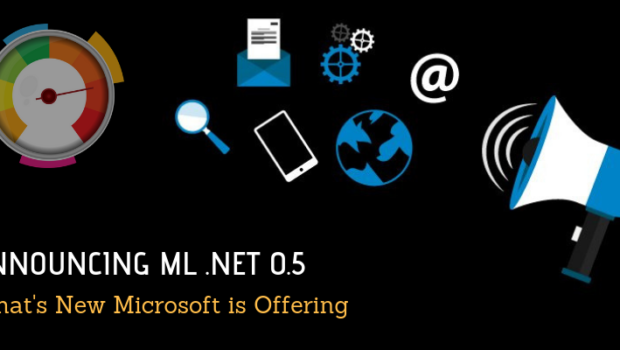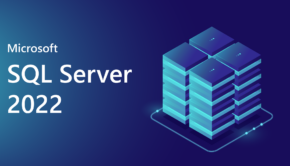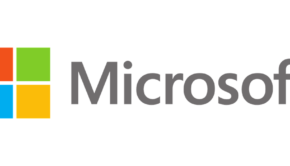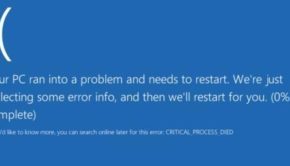Announcing ML.NET 0.5 – What’s New Microsoft is Offering
The Microsoft has recently announced the release of ML .NET 0.5, a machine learning framework. Just a few months ago, Microsoft introduced its ML .Net 0.1 at the Build 2018 conference and it has now announced the ML .Net 0.5. The people who do not know what ML .Net is, then let us tell you that ML .Net is an open source machine learning framework and cross-platform developed by Microsoft for .Net Developers. With announcing ML .Net 0.5 release, the Microsoft has also announced that TensorFlow Model scoring has been added to the ML .Net 0.5 as a transform. And Microsoft did work on the issues and feedback that were reported in the previous version of ML.Net.
What’s New in ML .Net 0.5
The inbuilt TensorFlow Model Scoring makes ML .Net 0.5 a big thing for .Net Developers. It will help them a lot in developing and making Machine Learning programs easily. Truly, the TensorFlow Model is a machine learning toolkit that helps training the extensive neural networks and high-performance statistical calculation. With the ML.NET 0.5, Microsoft has presented the primary level of joining with TensorFlow in ML.NET. Which enables a developer to take a current TensorFlow model, either self-developed or downloaded from elsewhere, and get the scores from the TensorFlow model in ML.NET 0.5. To execute TensorFlow scoring, a developer essentially needs to add a reference to the ML.NET NuGet bundles in the .NET Core. The ML.NET, then, incorporates and references the local TensorFlow library that empowers you to make codes for stacking a current prepared TensorFlow model record for scoring. The ML .NET is originally developed by Microsoft to make Machine Learning great in the .NET framework.
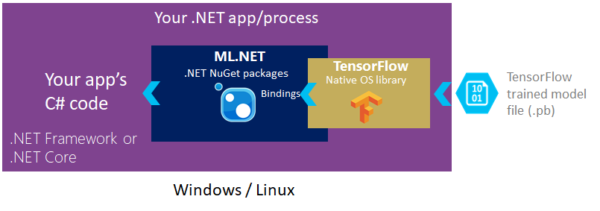
The TensorFlow is a popular deep learning toolkit too. Deep learning is a part of Machine Learning or Artificial Intelligence (AI) that enables a developer to teach programs to do what a human can do or what a human knows naturally. The Deep Learning is a little different from traditional Machine Learning. For example, a deep learning model can learn to make target detection and classification tasks just from texts, images, and sound. It even can perform some tasks like speech recognition and language interpretation whereas the traditional machine learning depends heavily on data processing and peculiarity engineering.
The Microsoft gives the support of Deep learning in ML.NET with its new ML.NET 0.5. This new Tensor Flow scoring capability does not require the developers to have a working knowledge of TensorFlow internal details.
The older version of ML .NET was introduced in May 2018 and it does not have inbuilt TensorFlow model scoring. But this time, Microsoft has provided it and has said to continuously enhance its features. The concept of developing ML.Net was to allow the users or developers to develop their own prototypes and brew custom ML into their programs or applications without the need for expertise in developing Machine Learning models. The ML.Net 0.1 or simply ML.NET was developed basically at the Microsoft Research Labs and it emerged into a notable framework over the last decade. The Microsoft used its ML.NET 0.1 in many products like Windows, Azure, Bing, and etc.
The first version of ML .NET, the ML.NET 0.1 enables many ML tasks such as classification like object, text categorization, & sentiment analysis etc. All these tasks through ML.NET are easy because of the .NET API used by Microsoft. And the addition of Deep learning feature through TensorFlow Transform in the ML.NET 0.5 will help the developers in making their work easier.
The Core Components of ML.NET 0.5 and ML.NET 0.1
The ML.NET includes .NET C# API (Application Programming Interface) for both the model training and consumption. It is aimed to provide a great E2E workflow for combining Machine Learning with .NET application in modeling, feature engineering, evaluation, operationalization, and pre-processing. It also supports all aspects of machine learning including high-performance math, extensible pipelines, data types, data structures, tooling support and etc.
Along with announcing ML .Net 0.5, the Microsoft has said that it is working on a new ML.Net API (Application Programming Interface) which will improve the flexibility and ease of use for the developers. As soon as this new API will be ready for use, it plans to deprecate the existing LearningPipeline API. Because this old Leaning Pipeline API lacks flexibility because the pipeline implementation is linear but not decomposable.
The TensorFlow model scoring in the new ML .NET 0.5 has made all the differences. Microsoft has made it easier for the developers to create new ML models without any expertise. And therefore it will help the .NET programmers to code ML with less learning and effort. It was introduced just a week ago and the ML .NET developers have started using the tool. The .NET developers who want to understand the ML.NET may visit its website. There are several illustrations and sample codes for the coders to understand the machine learning in a better way.

